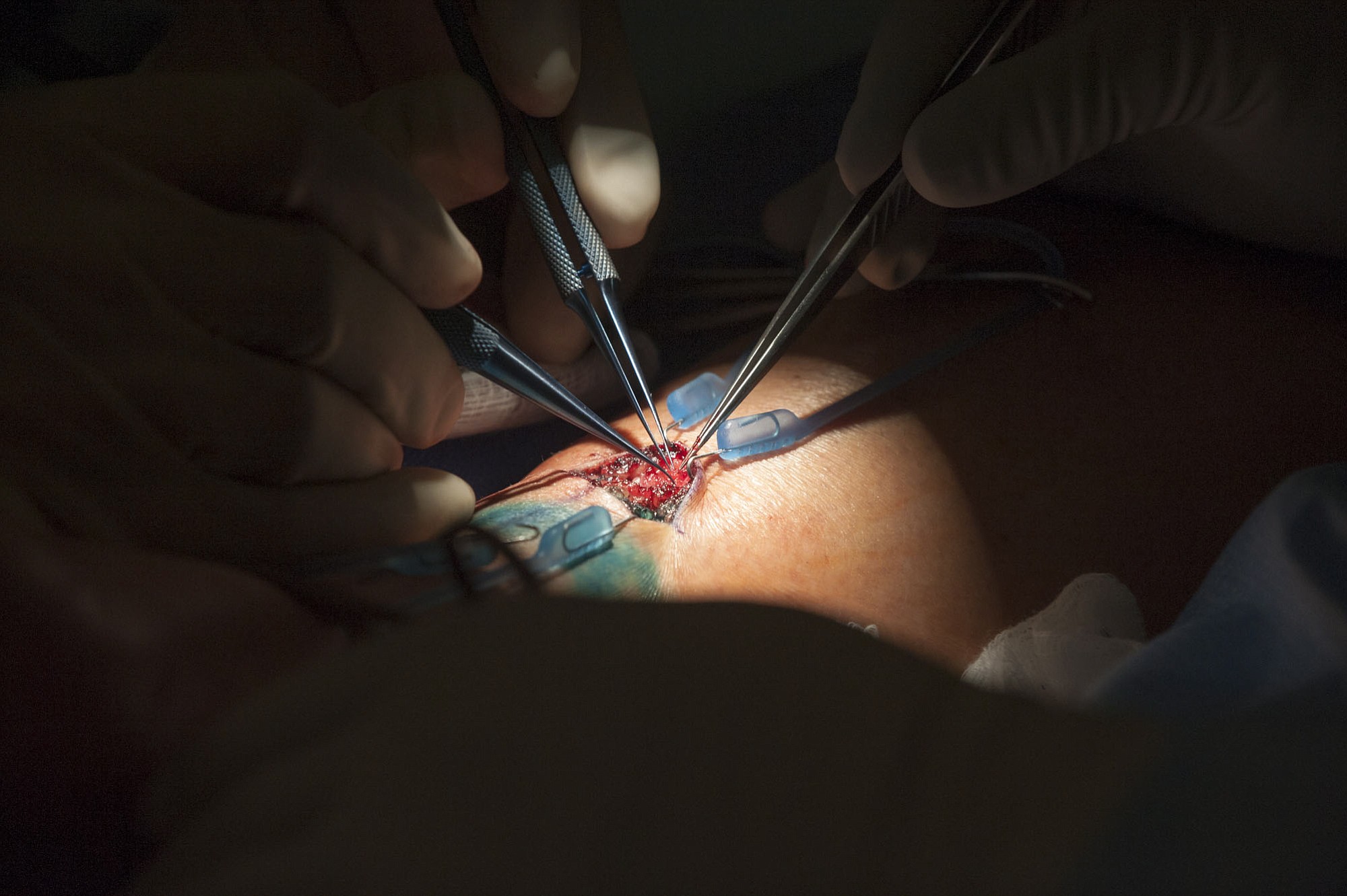For two years, Carol Prather of Vancouver endured painful swelling in her feet and ankles, unsure why her lower legs were retaining fluid.
Her doctor didn’t have an answer, telling her only to lose some weight and take water pills designed to help the body get rid of excess water. It never worked.
While on a cruise in August, Prather fell. She felt uncoordinated, her legs like bricks. The incident spurred her to pressure her doctor for an explanation.
Tests for diabetes, heart disease and kidney disease all came back negative. Stumped, Prather’s doctor sent her to a specialist who took one look at her swollen legs and told Prather she had lymphedema.
“It was such a relief to finally have an answer,” she said.
Two weeks ago, Prather, 48, underwent an innovative surgery to try to lessen the symptoms she experiences daily and will live with the rest of her life; lymphedema has no cure.
Prather was the first person in Southwest Washington to receive the two procedures — a vascularized lymph node transfer and a lymphaticovenous bypass — according to Dr. Manish Champaneria, a micro-vascular surgeon at PeaceHealth Medical Group Plastic Surgery.
Champaneria, who joined the practice last fall, studied the techniques under Dr. Peter Neligan at the University of Washington — the only other surgeon in the state known to be performing the procedure, Champaneria said.
If successful, Prather should see improvements within a few months to a few years, he said.
“These surgeries are not intended to cure lymphedema — there is no cure — but they’re designed to help reduce symptoms,” Champaneria said.
Relieving lymphedema
Lymphedema refers to swelling that generally occurs in an arm or leg. The condition is caused by a blockage in the lymphatic system, which is part of the immune system.
The lymphatic system circulates fluid throughout the body, collecting harmful substances such as bacteria and viruses. The lymphatic system then carries that fluid to lymph vessels, which lead to lymph nodes. Cells in the lymph nodes filter the fluid and flush the wastes from the body. A blockage in the system prevents lymph fluid from draining well, which leads to fluid buildup in the arms or legs, according to the Mayo Clinic.
Lymphedema is most commonly caused when lymph nodes are removed or damaged as part of cancer treatment. Less often, lymphedema can occur on its own, rather than as a secondary condition.
That was the case with Prather. She was diagnosed with primary lymphedema, a condition with which she was born. Prather has swelling throughout her body, but the swelling in her legs — from the knees down — is the most pronounced.
Two weeks ago, Champaneria removed healthy lymph nodes from near Prather’s neck and transplanted them to her right ankle. He also performed the lymphaticovenous bypass on three lymph channels in Prather’s leg. Essentially, Champaneria rerouted the lymph channels — which are 0.8 to 1 millimeter wide — into Prather’s veins for drainage. The procedures took 10 hours to complete.
The hope is, over time, those healthy lymph nodes will create new channels that will help drain the fluid from Prather’s legs. But that process can take time — up to two years, Champaneria said.
Women who have lymphedema in an arm — caused by breast cancer surgery, for example — can have lymph nodes removed from the neck area or abdomen and transplanted to the area below their armpit, Champaneria said. The upper extremities tend to show improvement in about half the time of a lower extremities, he said.
Prather hopes the procedure will mean she needs less therapy to reduce her symptoms.
Prather wears compression sleeves that fit like toeless socks, covering her ankles and feet. She also wears a second compression sleeve on each foot that covers her toes. Prather puts the sleeves on first thing in the morning and has to wear them all day, removing them only when she goes to bed. If she doesn’t wear them, she experiences painful swelling.
During the summer months, her feet get hot from the layers. The extra padding around her foot means she can’t wear certain types of shoes. And the compression sleeves are uncomfortable, sometimes causing numbness on the top of her foot.
In addition to the compressions, Prather receives a type of treatment called manual lymphatic drainage. A therapist lightly massages her legs — Prather compares it to being petted — directing the fluid in her legs toward the lymph nodes, where it can drain.
“I understand that it’s not going to be a complete cure,” Prather said. “But if it reduces the amount of time I’m in compression socks, I’m good.”
“It’s really going to get in the way of my life,” she added. “I want to wear cute shoes again.”




